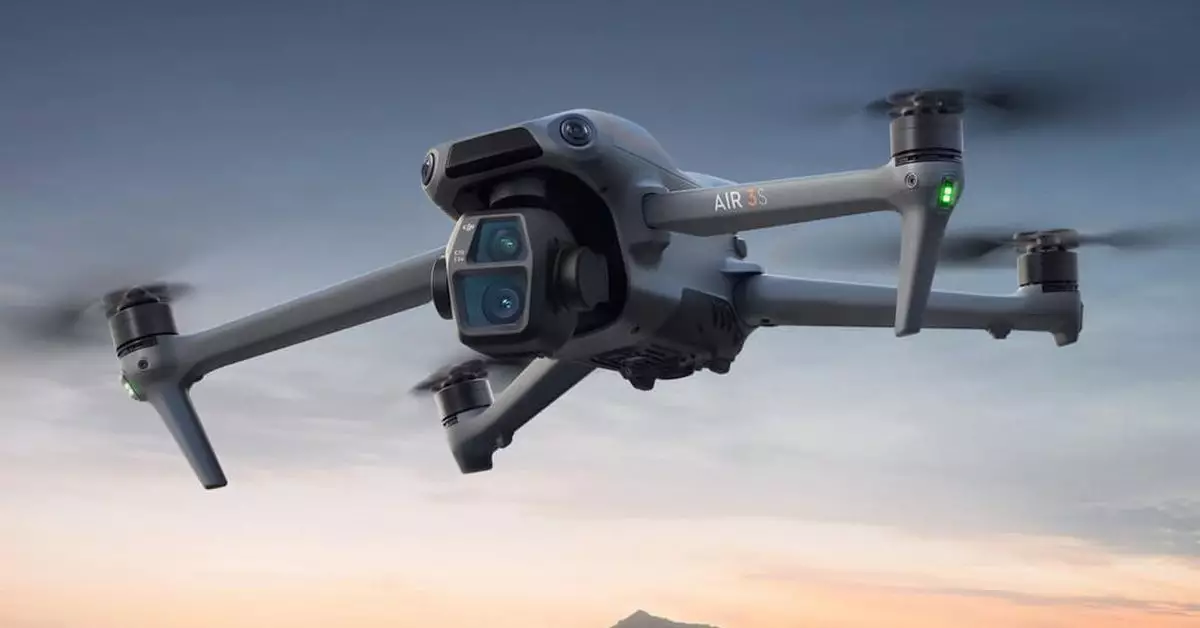In a climate where geopolitics intertwines with technological advancement, the recent announcement of the DJI Air 3S underscores the significant hurdles faced by the Chinese drone manufacturer in the U.S. market. DJI, a titan in the drone industry, has been vocal about the difficulties it currently encounters with U.S. Customs and Border Protection (CBP) that prevent its flagship consumer drone from reaching retail shelves.
Janus-faced, the situation is rooted not in an outright ban, but rather in heightened scrutiny stemming from a broader initiative by the U.S. Department of Homeland Security (DHS). DJI claims these measures are a response to growing concerns about the origins of products, particularly goods manufactured in China. As tensions rise over human rights practices involving the Uyghurs, this context offers a glimpse into the complexities that international companies face when navigating regulatory landscapes.
Central to the complications surrounding DJI’s import status is the Uyghur Forced Labor Prevention Act (UFLPA), a significant piece of legislation that aims to sanction products made with forced labor, particularly from the Xinjiang region in China. DJI asserts it does not manufacture any goods within this contentious area and has released documentation reiterating its commitment to adherence to U.S. laws and international standards. The company emphasizes that its manufacturing operations are conducted in Shenzhen and Malaysia, distancing itself from the allegations linked to forced labor practices.
The repercussions of being cited for UFLPA violations can be severe, as businesses face stringent penalties that can impede their ability to operate effectively. DJI’s assertion that it does not engage in forced labor may not suffice in the current political climate, which is heavily influenced by both ethical considerations and national security concerns.
The House of Representatives has taken a proactive approach to engaging with the complexities of foreign drone imports by proposing a ban on DJI products. However, this legislative ambition is still in flux. While the House has approved the ban, the Senate’s actions have led to its removal from the National Defense Authorization Act (NDAA) in its recent iterations. Nonetheless, the ban was reintroduced as an amendment, indicating that the legislative landscape remains dynamic and fraught with potential consequences for DJI.
These legislative developments come against a backdrop of an already fractured marketplace. While DJI has launched various successful products in the past, the Air 3S’s absence from retail channels significantly limits consumer access. Existing customers may still utilize their devices, but new purchases are curtailed unless one opts for direct procurement through DJI’s online store.
The ramifications of these import challenges extend beyond mere retail sales; they intersect with DJI’s broader business model, significantly affecting its enterprise and agricultural drone operations. The U.S. market is pivotal for DJI’s success, yet government interventions threaten to undermine its competitive edge. The existing restrictions place DJI in a precarious position, as it attempts to assuage concerns while adhering to legal requirements.
Despite these adversities, DJI remains steadfast, expressing optimism about a potential resolution to its challenges with U.S. customs. The company is actively engaging with CBP, demonstrating a willingness to clarity its practices while underscoring compliance efforts through audits and certifications. However, the outcome remains uncertain, reflecting the ongoing complexity of international trade relationships and technology regulation.
As DJI navigates these turbulent waters, the discourse surrounding drone regulation highlights the intricate relationship between technology, ethics, and international law. While the Air 3S represents technological innovation for consumers, the market complexities necessitate careful navigation through bureaucratic hurdles.
In an era where technological capability and geopolitical factors are inextricably linked, the future of DJI in the U.S. market may well depend on swift yet thorough regulatory clarifications, as well as successful negotiations with Congress. Without these resolutions, the skies remain uncertain, and the fate of DJI as a major player in the drone landscape hangs in the balance.


Leave a Reply